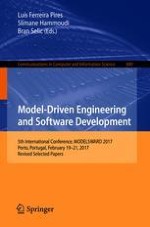2018 | OriginalPaper | Buchkapitel
Modelling the World of a Smart Room for Robotic Co-working
verfasst von : Uwe Aßmann, Christian Piechnick, Georg Püschel, Maria Piechnick, Jan Falkenberg, Sebastian Werner
Erschienen in: Model-Driven Engineering and Software Development
Aktivieren Sie unsere intelligente Suche, um passende Fachinhalte oder Patente zu finden.
Wählen Sie Textabschnitte aus um mit Künstlicher Intelligenz passenden Patente zu finden. powered by
Markieren Sie Textabschnitte, um KI-gestützt weitere passende Inhalte zu finden. powered by
